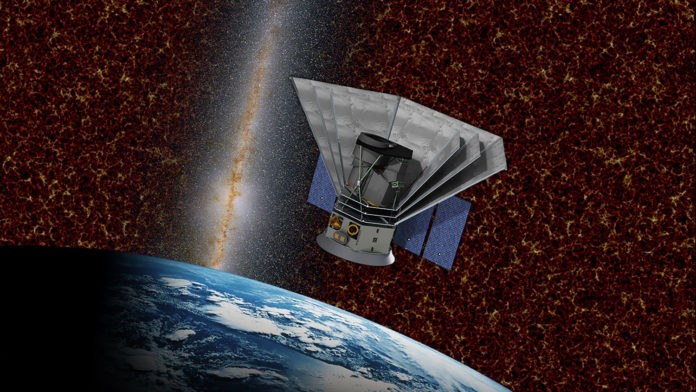NASA has approved preliminary designs of the SPHEREx space spectrophotometric observatory project. The observatory will study distant galaxies, test the universe’s expansion theories, and search for biogenic molecules in protoplanetary disks and molecular clouds.
The space telescope SPHEREx, or Spectro-Photometer for the History of the Universe, Epoch of Reionization and Ices Explorer, for the first time in the world, will map the entire sky four times, creating a massive database of stars, galaxies, nebulas, and many other celestial objects.
It will be about the size of a subcompact car (weighs roughly 1.2 tons) and measure just 8 inches (20 centimeters) in diameter. Its instruments will detect near-infrared light, or wavelengths several times longer than the light visible to the human eye. Using a spectroscopy technique, the telescope will break near-infrared light into its individual wavelengths or colors.
Such data can reveal what an object is made of because certain chemical elements absorb and emit light of a specific wavelength. This method also allows you to determine the object’s distance from Earth, which means the specified map will be three-dimensional.
SPHEREx will be the first NASA mission to build a full-sky spectroscopy map in near-infrared, and it will observe a total of 102 near-infrared colors. “That’s like going from black-and-white images to color; it’s like going from Kansas to Oz,” said Allen Farrington, the SPHEREx project manager at JPL.
In addition to creating this map, the SPHEREx telescope will study the rapid expansion of the universe after the Big Bang, the composition of young planetary systems, and the history of galaxy formations from the very first stars to the galaxies we know today. The faint glow formed by all the galaxies in the universe will be observed, thanks to which the night sky is never perfectly black.
The scientist will also use the SPHEREx map to look for water, ice, and frozen organic molecules – the building blocks of life on Earth – around newly forming stars in our galaxy. Ice is formed around dust grains in cold, dense gas clouds throughout the galaxy. Young stars form inside these clouds, and planets form from disks of leftover material around those stars. Ice in these disks could seed planets with water and other organic molecules. Scientists want to know how frequently life-sustaining materials like water are incorporated into young planetary systems. This will help them understand how common planetary systems like ours are throughout the cosmos.
The work can begin on creating a final, detailed design and building the hardware and software. Building the mission components will take 2.5 years before entering the next mission phase, when those components will be brought together, tested, and launched. If all goes well, the SPHEREx is scheduled to launch between June 2024 and April 2025.
